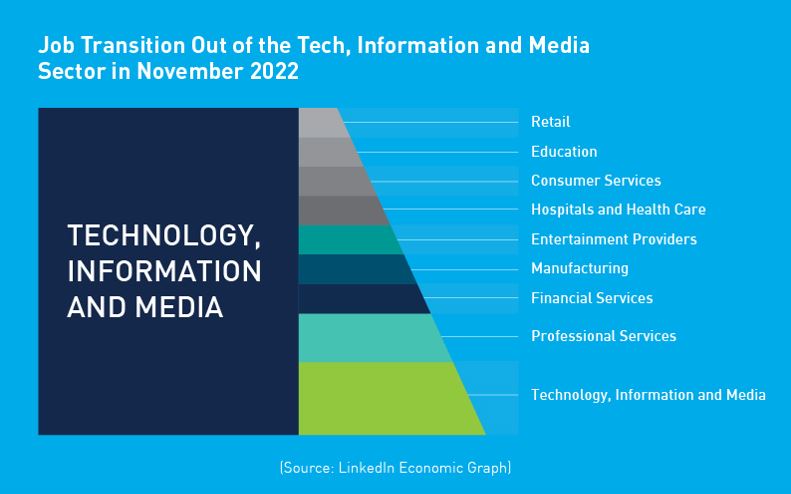Situation
With the rise of ecommerce and consumers seeking more digital experiences, this leading grocery retailer needed to shift their workforce to support web and mobile app development, data analytics, cloud computing and more. They anticipated that 50% of their new hires would go into digital, tech and data-focused roles, yet their legacy employer brand and recruitment journey was designed for volume in-store hiring.
However, tech and digital talent couldn’t see past the shop floor. In a highly competitive and disruptive market, millennial and Gen Z digital natives simply didn’t think a retailer could match their needs or ambitions, despite the retailer’s vast capabilities and breadth of opportunities.
The organization turned to PeopleScout to help them evolve their employer value proposition (EVP) and employer brand so that it would speak to candidates with tech and digital skills and experience. Because of the stiff competition, the new brand had to work hard. It needed to bring their culture to life, define what was unique about the retailer and do justice to their innovation and variety of roles.
It also had to launch within 50 days to coincide with the conclusion of the launch of a new Digital, Tech and Data business unit.
Solution
In response, we created a dedicated brand platform for digital, tech and data roles. This brought all these roles under one umbrella, delivering integrated solutions across the company. With this bold new direction, the client could offer greater opportunities and take a new value proposition to market.
Curate
It was vital to understand the motivations of our audience. What was important to them, and what could the retailer offer that was a good fit?
To make sure we really knew our target talent’s needs and wants, we had to gain key insights from tech-focused colleagues of all levels, plus external contacts who fit the “digital native” demographic. It was also crucial to ensure all our insight came from a truly diverse pool of respondents.
We started by conducting interviews with leaders and visionaries to establish a clear view on the current situation and strategic direction for the future. We then held focus groups with team leads across data, tech and digital, as well as a series of workshops with their teams. This gave us a clear picture that helped us shape our prototype proposition.
Our external research consisted of in-depth interviews with DevOps specialists, software engineers and data scientists working for competitors for talent in digital, tech and data. Additionally, we surveyed potential candidates on market perception of the retailer. Our proposition was tested on all external candidates before finalizing.
Our key insights told us that external talent wanted:
- Challenging problems
- Collaborative cultures
- Freedom to experiment and learn
- A flexible work environment
- Training and development
- To see their work implemented
We found that the client’s offering matched this head on. We needed to highlight these things in the new employer brand platform:
- Size, scale and complexity of challenge
- Values and culture
- Opportunities to develop
- Tangible impact
- Ability to work flexibly
Create
We combined our findings into employer value proposition (EVP) pillars that positioned the retailer as the perfect blend of nimble start-up with big business backing and future-facing retail giant. Using these pillars, we devised bold, exciting creative that brought our proposition to life. Steeped in the organization’s longevity and far-reaching impact from serving 71% of the public, the EVP focused on the journey to become a nimble tech-forward organization that creates incredible digital experiences.
The new platform also included a fresh color palette, a new tone of voice and a suite of edgy, tech-inspired characters with a sense of fun to be used across all tech, digital and data branding. Derived from tech and data symbols, they served to disrupt notions of the client as a purely retail organization.
These creative elements were then rolled out across a huge range of recruitment tools, including a brand book, presentation roadshow, social media video content, event materials, careers pages, lanyards, PowerPoint slides, a LinkedIn channel and external media. The tech teams are even dressing their offices using the new creative, applying images of the brand characters to walls and lockers and producing large 3D brand symbols situated across various spaces.
Community
The brand was well received internally and externally, driving engagement and inspiring teams. In order to build buzz, we built a communications and engagement strategy to drive awareness, which also resulted in existing employees becoming brand ambassadors.
With the brand in place, we developed a more intuitive candidate experience with a simplified application process. We also designed an email nurture program to convert interest into applications. These communications harnessed the power of our new brand ambassadors and immersed candidates in personalized content.
The new employer brand messaging now permeates all communications coming from the division, including the specially built LinkedIn community which acts as a digital talent pool for the retailer.
As part of the new brand launch, we ran interactive workshops and sessions to generate brand awareness at the annual Women in Data conference. This gave the client an opportunity to build relationships with women in the tech space and speak about their available opportunities to prospective candidates.
Results
Across LinkedIn, strong results from the launch of the brand show we’ve cut through to successfully appeal to our audience.
In the month after the launch, the LinkedIn content garnered:
- 216K impressions
- 4,100 engagements (a 39% increase from prior to the new brand launch)
The LinkedIn community has grown to over 17,000 followers in the three years since the launch.
On the client’s career site, there are an average of 5,000 proactive searches per month related to software engineering, showing that the brand has been successful in positioning the retailer as an employer of choice for software development professionals. The client experiences a monthly average of 13,000 views of digital, tech and data job postings.
In addition, over the last three years, there’s been a 66% increase in visits to the company’s digital, tech and data careers landing page.






